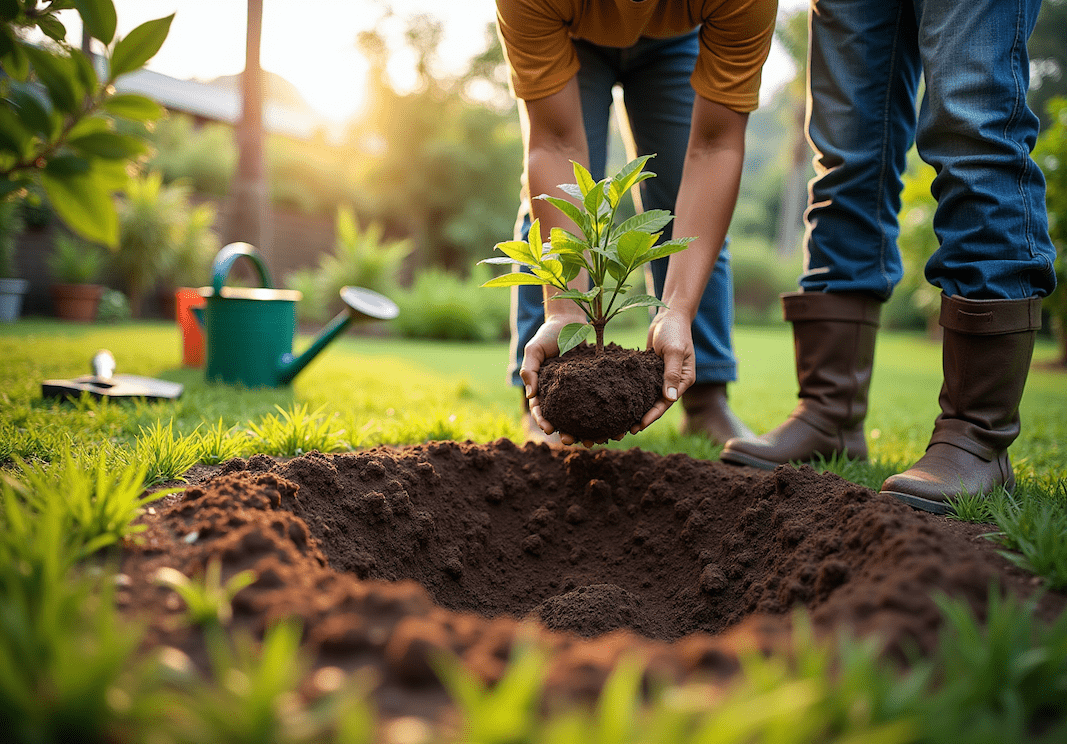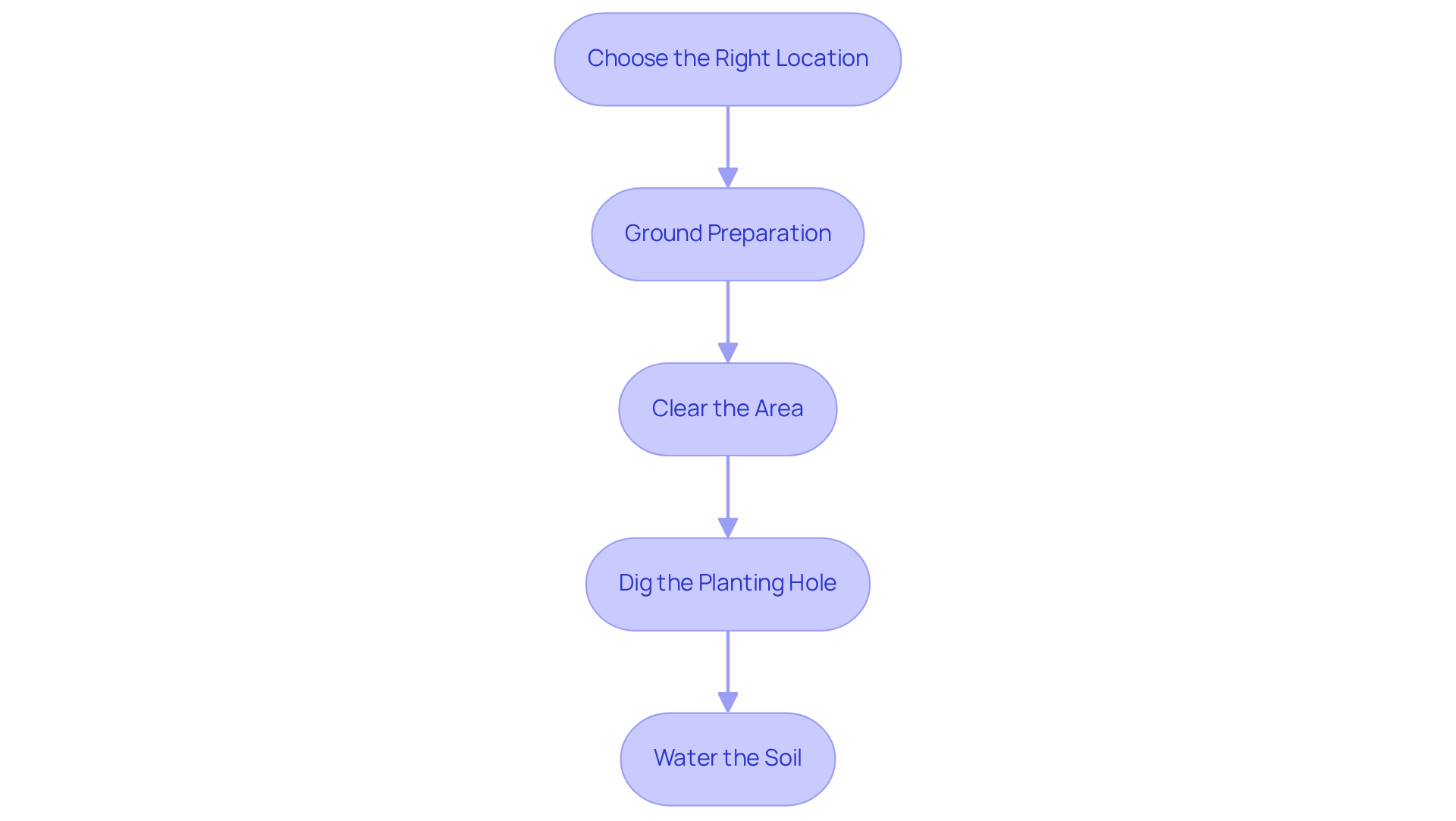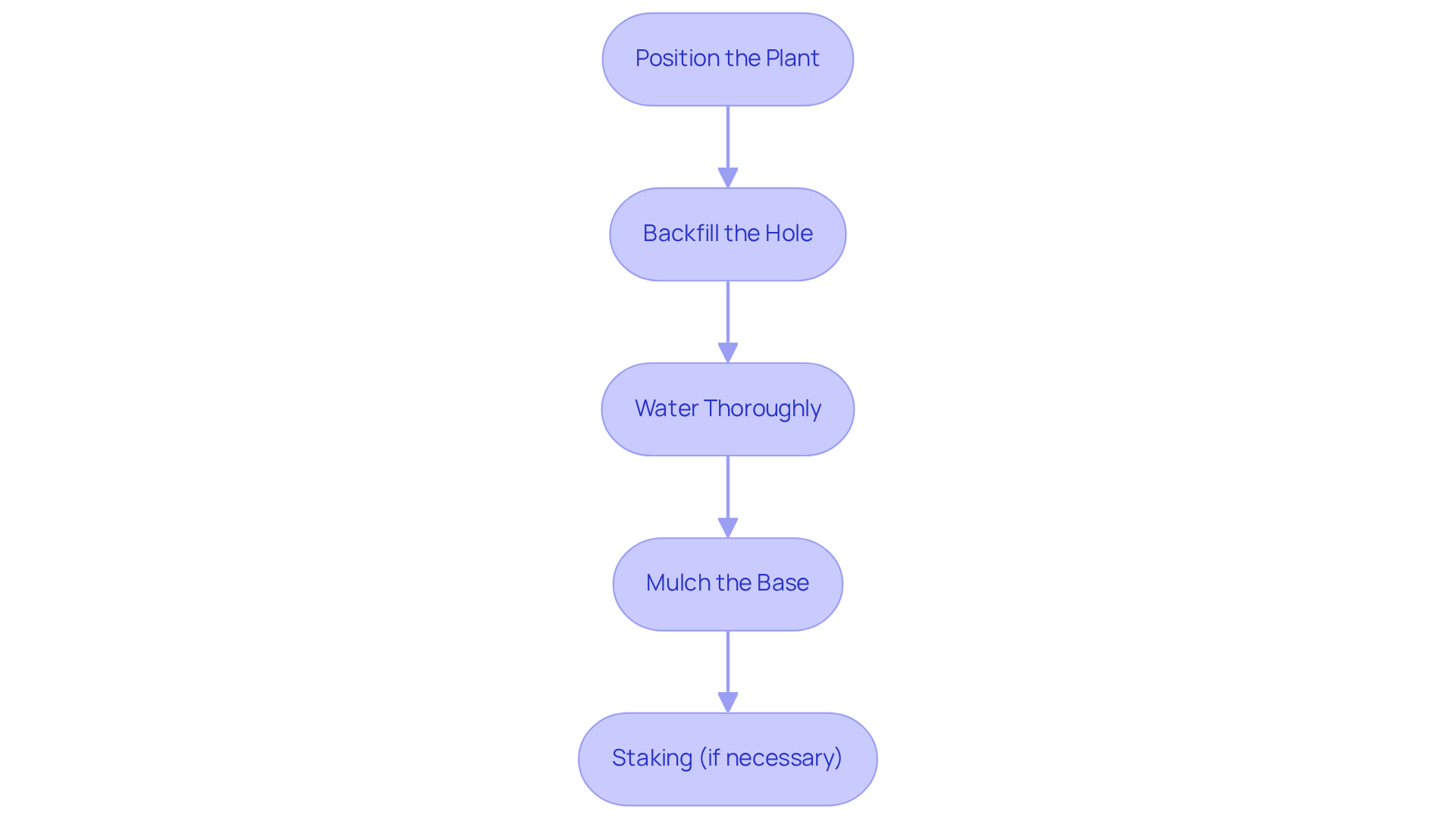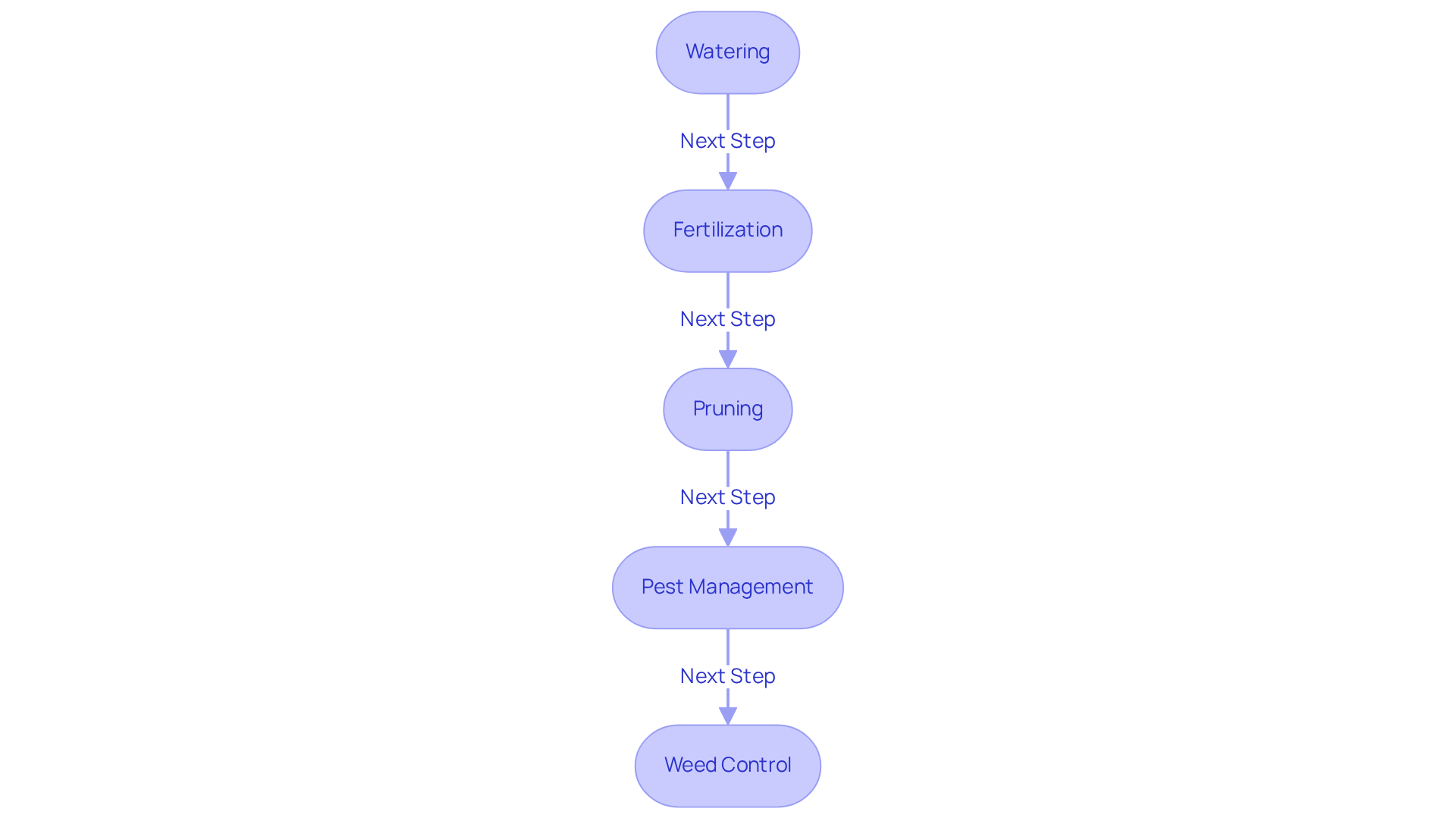
Kohala Longan Tree: Steps for Planting and Care
Share
The Kohala longan tree, known for its sweet and succulent fruit, along with its lush foliage, presents a delightful addition to any garden, particularly in warm, humid climates. Cultivating this tropical gem successfully requires more than merely planting a seedling; it necessitates an understanding of its specific needs regarding sunlight, soil, and ongoing care. Many aspiring gardeners encounter challenges in ensuring their longan tree thrives and produces fruit. Therefore, what are the essential steps to not only plant but also nurture this tree to its full potential?
Thinking about growing a Kohala Longan Tree in your garden?
Explore the Kohala Longan Tree at Everglades Farm - shipped directly from Florida.
1. Prepare Your Planting Site and Soil
- Choose the Right Location: It is essential to select a sunny spot that receives a minimum of 6-8 hours of direct sunlight each day. The kohala longan tree thrives in warm, humid environments, making complete sun exposure vital for its optimal development. Insufficient sunlight can result in leggy growth and a decrease in fruit yield.
- Ground Preparation: Ensure that the soil is well-draining, sandy loam with a pH level between 5.5 and 6.5. To , incorporate organic matter such as compost or well-decomposed manure. This practice enriches the soil, enhances drainage, and fosters healthy plant growth, which is crucial for successful cultivation of the kohala longan tree.
- Clear the Area: It is important to remove any weeds, grass, or debris from the planting site. A clean area minimizes competition for nutrients and aids in preventing pests and diseases. Additionally, maintaining a grass-free zone around the trunk is essential for the young plant to establish itself effectively.
- Dig the Planting Hole: Create a hole that is twice as wide and equally deep as the root ball of the plant. This allows the roots to spread easily and establishes a solid base for the plant, promoting vigorous growth. When planting multiple saplings, ensure they are spaced 20-30 feet apart to allow for adequate air circulation and sunlight penetration.
- Water the Soil: Prior to planting, thoroughly water the hole to ensure the soil is moist but not waterlogged. The kohala longan tree has moderate to high water requirements, especially during the growing season, making consistent moisture critical for successful establishment.

2. Plant Your Kohala Longan Tree
- Position the Plant: Carefully remove the plant from its container, ensuring that the roots remain undamaged. Place the tree in the center of the hole, making sure the graft union is above ground level to promote healthy growth.
- Backfill the Hole: Refill the hole with the soil that was previously removed, gently tamping it down to eliminate air pockets. It is important to avoid excessive compaction, as this can restrict plant growth. Tree specialists recommend that the ground should be solid yet loose enough to allow for expansion.
- Water Thoroughly: After backfilling, irrigate the plant deeply to help settle the soil around the roots. This initial watering is crucial for providing moisture to the newly planted sapling, which is vital during its first year—a period where proper care can significantly influence survival rates.
- Mulch the Base: Apply a layer of organic mulch around the base of the plant, ensuring a few inches of space around the trunk. Mulch is essential for retaining moisture, controlling weeds, and managing soil temperature, all of which contribute to the plant's health.
- Staking (if necessary): If the plant is tall or located in a windy area, consider staking it for additional support. Use soft ties to secure the plant without causing damage to the trunk, ensuring stability as it establishes itself.

3. Maintain and Care for Your Longan Tree
- Watering: It is essential to keep the soil consistently moist, especially during the growing season. Young kohala longan trees require more frequent watering, while mature trees can be watered less often, primarily in spring and summer. A recommended schedule is to water every two weeks, adjusting as necessary based on weather conditions.
- Fertilization: Begin with a balanced, slow-release fertilizer in early spring to encourage vigorous new growth. To , supplement with potassium and magnesium every 6-8 weeks throughout the growing season. Additionally, organic fertilizers such as compost and well-rotted manure can enrich the soil, providing essential nutrients for optimal growth.
- Pruning: Conduct pruning in late winter or early spring to remove any dead or diseased branches and to shape the plant. This practice enhances air circulation and sunlight penetration, both of which are vital for healthy fruit development. Regular pruning also helps maintain a manageable size and encourages a robust structure.
- Pest Management: Regular inspections of your longan plant for common pests, such as aphids and scale insects, are crucial. Employ organic pest control methods, including neem oil or insecticidal soap, to effectively manage infestations. Early detection is key, as it can prevent more significant issues down the line.
- Weed Control: Keeping a weed-free area around the plant minimizes competition for nutrients and reduces the risk of pests and diseases. Effective weed control not only supports the health of the kohala longan tree but also enhances its overall development and fruit yield.

4. Troubleshoot Common Issues in Longan Tree Care
- Yellowing Leaves: Yellowing leaves are often a sign of , particularly nitrogen. To remedy this issue, apply a balanced fertilizer or organic compost to enrich the soil and promote healthy growth. This approach not only addresses the immediate concern but also enhances the overall nutrient profile of the soil, benefiting the kohala longan tree in the long run.
- Wilting or Drooping Leaves: Wilting leaves may indicate either overwatering or underwatering. To assess the situation, check the soil moisture: if it feels excessively wet, reduce the watering frequency; conversely, if the soil is too dry, increase watering to restore adequate moisture levels. This careful monitoring is essential for maintaining the plant's health and vitality.
- Poor Fruit Production: Insufficient fruit production can result from inadequate sunlight or nutrient supply. Ensure your kohala longan tree receives a minimum of 6-8 hours of sunlight daily, and adjust your fertilization practices to meet its nutritional needs. By providing optimal conditions, you can significantly enhance fruit yield and quality.
- Regular inspections of your kohala longan tree for signs of pests, such as passion vine hoppers, are crucial for preventing damage from pest infestations. If pests are detected, promptly treat the plant using organic pest control methods, like insecticidal soap or neem oil. This proactive approach helps reduce damage and safeguards the overall health of your kohala longan tree.
- Diseased Branches: Dead or diseased branches should be pruned immediately to prevent the spread of disease. Maintaining good air circulation around the tree is vital for minimizing disease risk and promoting vigorous growth. By prioritizing these practices, you can ensure the longevity and productivity of your kohala longan tree.
Conclusion
Successfully planting and caring for a Kohala longan tree involves a series of strategic steps that ensure its healthy growth and fruitful yield. Understanding the specific requirements of this tropical tree—such as sunlight, soil quality, and consistent watering—enables gardeners to create an ideal environment for their longan trees to thrive. The significance of proper planting techniques, ongoing maintenance, and proactive problem-solving is crucial for nurturing a robust and productive tree.
Key points highlighted throughout the guide include:
- The importance of site selection
- Soil preparation
- Regular care practices like watering, fertilization, and pest management
Each step, from planting to troubleshooting common issues, plays a vital role in fostering a healthy Kohala longan tree. Emphasizing the need for a sunny location and nutrient-rich soil, while maintaining vigilant care and attention, can lead to a bountiful harvest of delicious longan fruit.
In conclusion, cultivating a Kohala longan tree is a rewarding endeavor that enhances the beauty of any garden while providing delicious fruits for enjoyment. By following the outlined steps and remaining attentive to the tree's needs, gardeners can ensure their longan tree flourishes. Embrace the journey of nurturing this tropical gem, and enjoy the satisfaction of watching it grow and produce fruit for years to come.
Grow Your Own Delicious Kohala Longan Tree Today!
Start now with Everglades Farm and transform your garden into a tropical paradise.
Frequently Asked Questions
What is the ideal location for planting a kohala longan tree?
The ideal location for planting a kohala longan tree is a sunny spot that receives a minimum of 6-8 hours of direct sunlight each day.
What type of soil is best for kohala longan trees?
The best soil for kohala longan trees is well-draining sandy loam with a pH level between 5.5 and 6.5.
How can I improve the soil quality before planting?
To improve soil quality, incorporate organic matter such as compost or well-decomposed manure, which enriches the soil, enhances drainage, and fosters healthy plant growth.
Why is it important to clear the planting area?
Clearing the planting area of weeds, grass, or debris minimizes competition for nutrients and helps prevent pests and diseases.
How should I dig the planting hole for a kohala longan tree?
The planting hole should be twice as wide and equally deep as the root ball of the plant to allow the roots to spread easily and establish a solid base.
What is the recommended spacing for multiple kohala longan saplings?
When planting multiple saplings, they should be spaced 20-30 feet apart to allow for adequate air circulation and sunlight penetration.
How should I prepare the soil before planting?
Before planting, thoroughly water the hole to ensure the soil is moist but not waterlogged, as the kohala longan tree has moderate to high water requirements, especially during the growing season.


